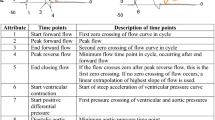Abstract
More than 18 millions of people are still suffering from cardiovascular diseases (CVD) globally. Although various hemodynamics features are known to be related to the development of the CVDs, scrutinizing all hemodynamic features in suffering patients is not technically feasible yet. Instead, in-vitro replications of physiological and pathological blood flows have been preferred to investigate the changes in hemodynamics. In this study, we manufactured affordable pulse duplication system for the in-vitro cardiovascular experiments. The instrument consists of gear pump, servo-motor, servo-driver, data acquisition modulus, reservoir and orifice, which costs less than 7000 $. The two pressure sensors are equipped on the orifice to measure the pulsatile flow rate based on the pressure drop. The flow rate is given to feedback system to exactly duplicate the desired flow waveform. The developed system was tested to replicate various aortic blood flow waveforms with 60 to 120 beat per minute, and the results showed that the pulse duplication system replicates the blood flow waveforms with an error of less than 0.4±0.4 L/min. The duplicated waveform was stable and changed less than 5 % after less than 40 feedback iterations.
Similar content being viewed by others
References
A. Alwan, Global Status Report on Noncommunicable Diseases 2010, World Heath Organization (2011).
D. Mozaffarian et al., Executive summary: Heart disease and stroke statistics-2015 update: A report from the American Heart Association, AHA Journals, 131 (2015) 434–441.
T. Ruesink, R. Medero, D. Rutkowski and Roldán-Alzate, In vitro validation of 4D flow MRI for local pulse wave velocity estimation, Cardiovascular Engineering and Technology, 9 (4) (2018) 674–687.
R. A. Chaudhury et al., A high performance pulsatile pump for aortic flow experiments in 3-dimensional models, Cardiovascular Engineering and Technology, 7 (2016) 148–158.
D. Plewes, S. Urchuk, S. Kim and I. Soutar, An MR compatible flow simulator for intravascular pressure simulation, Americal Association of Physicists in Medicine, 22 (7) (1995) 1111–1115.
R. R. Mechoor, T. Schmidt and E. Kung, A real-time programmable pulsatile flow pump for in vitro cardiovascular experimentation, Journal of Biomechanical Engineering, 138 (11) (2016) 111002.
W. Tsai and Ö. Savaş, Engineering b, computing, Flow pumping system for physiological waveforms, Medical & Biological Engineering & Computing, 48 (2) (2010) 197–201.
K. J. Chodzyński et al., An in vitro test bench reproducing coronary blood flow signals, Biomedical Engineering Online, 14 (1) (2015) 77.
J. G. Webster, The Measurement, Instrumentation and Sensors Handbook, CRC Press (1998).
Y. V. Vassilevski et al., Patient-specific anatomical models in human physiology, Russian Journal of Numerical Analysis and Mathematical Modelling, 30 (3) (2015) 185–201.
H. Ha et al., Effect of pannus formation on the prosthetic heart valve: In vitro demonstration using particle image velocimetry, PLOS ONE, 13 (2018) e0199792.
Acknowledgments
This research was supported by the Basic Science Research Program through the National Research Foundation of Korea (NRF), funded by the Ministry of Education (2018R1D1 A1A02043249). This study was also supported by a 2019 Research Grant from Kangwon National University (D1001679-01-01).
Author information
Authors and Affiliations
Corresponding author
Additional information
Recommended by Associate Editor Sangyoup Lee
Hojin Ha received his B.S. at POSTECH, Korea, in 2009. He obtained his Ph.D. at POSTECH, Korea, in 2015. He is currently an Assistant Professor in the Department of Mechanical and Biomedical Engineering, Kangwon National University, Korea. His research interests are in the areas of experimental fluid dynamics.
Rights and permissions
About this article
Cite this article
Choi, JW., Choe, J.H., Jung, S.Y. et al. Fabrication of affordable pulse duplication system for the in-vitro cardiovascular experiments based on gear pump and orifice flowmeter. J Mech Sci Technol 33, 3927–3932 (2019). https://doi.org/10.1007/s12206-019-0737-8
Received:
Revised:
Accepted:
Published:
Issue Date:
DOI: https://doi.org/10.1007/s12206-019-0737-8




